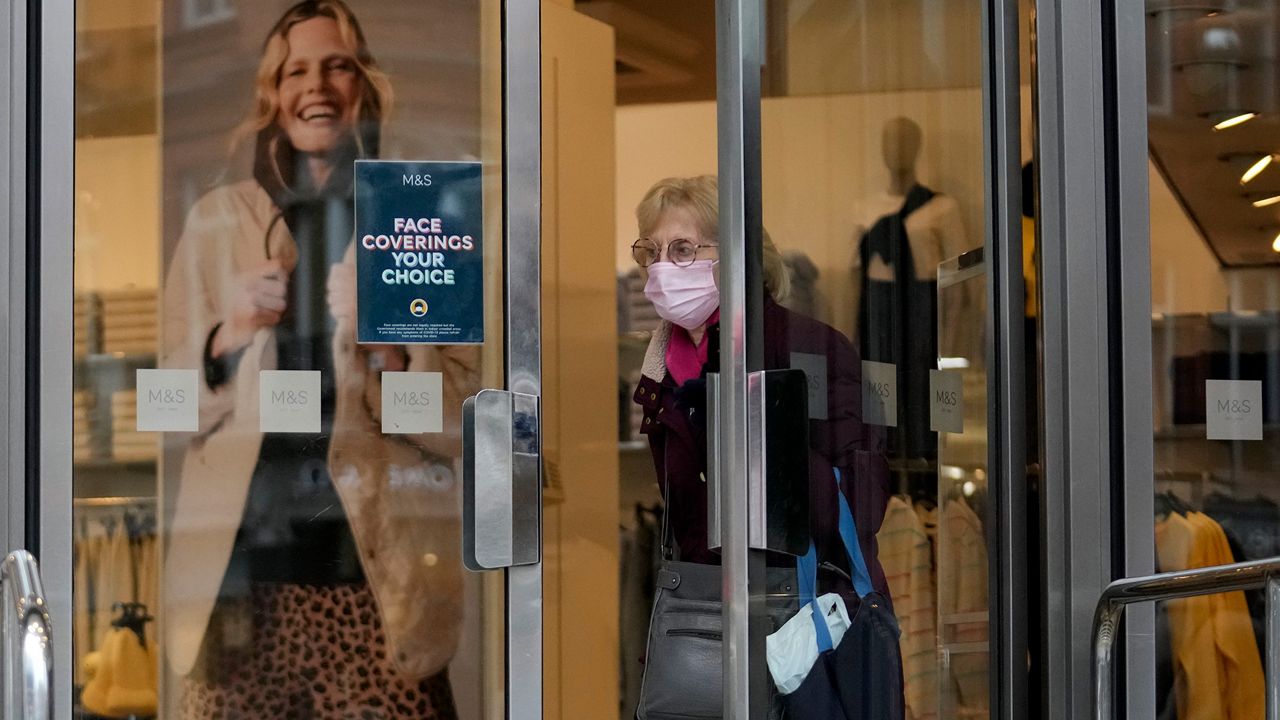COLUMBUS, Ohio — COVID-19 numbers are rising slightly in Ohio after three months of declines as officials report the BA.2 omicron subvariant is the dominant strain in the state.
What You Need To Know
- The BA.2 COVID-19 subvariant accounts for about 84% of the region's cases
- While virus levels are rising in Ohio, officials are not alarmed by the trend
- COVID-19 ICU patient numbers are at an all-time low, hospital data shows
Cases in Ohio have increased in consecutive weekly updates from the Ohio Department of Health, which are posted on Thursdays:
- April 14: 4,808 cases
- April 7: 3,828 cases
- April 1: 3,103 cases
- March 25: 3,668 cases
Health officials said they are closely monitoring the trends, but they continue to feel positive about the state of the pandemic in Ohio.
Cuyahoga County said it hasn’t documented a virus death in three weeks, and county health officials reported during a news conference Wednesday that the region is in good shape with a positivity rate of 2%.
“We have a good proportion or subset of the population that has some protection or immunity, and so, now with that we're paying more closer attention to looking at clusters and outbreaks that may be occurring within the community,” said Jana Rush, director of epidemiology, surveillance and informatics at the Cuyahoga County Board of Health.
The BA.2 subvariant is more transmissible than the original strain of the omicron variant, but experts haven’t seen any evidence that it causes more severe illness, Rush said.
The Centers for Disease Control and Prevention's latest variants update shows BA.2 representing about 84% of omicron cases in the region that includes Ohio, which Rush said is consistent with local figures for Cuyahoga County.
Sara Koenig, Ohio State College of Medicine’s director of COVID-19 advanced technologies, said there’s “no need to panic” as BA.2 outcompetes BA.1.
“BA.2 likely will be responsible for all of the COVID-19 cases at some point, just as BA.1 was this past winter,” she wrote in a recent article. “But it’s encouraging to look globally at countries that have already had a wave of BA.1 and BA.2. In India, for example, BA.2 took over as the dominant variant around the peak of the winter surge, and they didn’t see a second wave.”
While some countries including the United Kingdom experienced surges after BA.2 became dominant, Koenig said that’s not as likely in the U.S. because the subvariant is taking over here at a time when transmission levels are near their lowest levels since the pandemic began.
As of the latest update Thursday, 314 patients are hospitalized with COVID-19 in Ohio and a record-low of 38 patients are in intensive-care units, according to Ohio Hospital Association data. Hospitalizations reached a record low of 200 patients on July 9, 2021.
In its weekly update Thursday, the Ohio Department of Health reported 100 new COVID-19 deaths. The state’s data typically represents a lag of several weeks.
According to the state’s COVID-19 wastewater surveillance, virus activity has recently increased substantially at 19 sites, increased moderately at seven sites, remained steady at 36 sites and decreased at 10 sites.
The Washington Post reported Thursday that Ohio officials have alerted approximately a dozen local health departments in the last two weeks about local increases in virus activity.
Rush said vaccination and prior infection continue to offer protection against BA.2, and she encourages residents to get booster shots for greater protection if they are eligible.
Dr. Warren Morris, chief clinical officer at Health Partners of Western Ohio, reported that most of their patients who test positive are faring well.
“In the last few weeks, we've been seeing fewer and fewer severe cases. Many people are largely asymptomatic at this point,” he told Spectrum News in an interview earlier this week.
As federal officials monitor the subvariant’s impact, the CDC extended the mask mandate for public transportation by 15 days on Wednesday, moving the expiration date from April 18 to May 3. Officials will make a decision in the coming weeks as to whether it will be extended further.
Rush said Cuyahoga County officials are tracking the variant landscape in the region and using the wastewater surveillance data to look for early warnings of virus increases.
“We should remain on alert as the pandemic continues to unfold. Children and seniors still remain vulnerable. We have many tools to protect ourselves, and we should remain ready to use them as a situation changes here locally and nationally,” she said.



